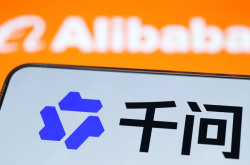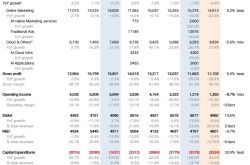Why Is Bilibili Lagging Behind Kuaishou and ByteDance in AI?
![]() 11/20 2025
11/20 2025
![]() 517
517
In contrast to ByteDance and Kuaishou, which view AI as a new battleground, Bilibili, despite possessing rich digital assets, seems to regard AI primarily as a tool for ecosystem repair and enhancement.
Among major content community platforms, Bilibili boasts extensive native digital assets. However, it adopts a relatively conservative approach to AI deployment. Unlike ByteDance and Kuaishou, which heavily invest in AI to participate in the so-called "AI arms race," Bilibili positions AI more as a supporting tool. Its aim is to solidify its creator ecosystem and boost advertising monetization, rather than engaging in large-scale AI technology competition.
This strategy reflects the practical pressures Bilibili is currently facing. With slowing ecosystem growth and creators encountering numerous challenges in commercialization, leveraging AI to activate the creator ecosystem, enhance content supply, and improve advertising efficiency has become Bilibili's top priority. To a certain extent, Bilibili is attempting to use AI to stabilize and amplify its core assets: creators, content ecosystem, and young users.
Bilibili's cautious pace in AI seems to be a strategic trade-off. Unlike ByteDance and Kuaishou, which are fundamentally algorithm and technology-driven companies, Bilibili's core strengths lie in community, content, and creator ecosystem. Its AI R&D team size, budget, engineering culture, and computational power reserves are relatively modest compared to its rivals. As a result, Bilibili may adopt a more cautious and constrained approach, treating AI as a tool for ecosystem repair and enhancement rather than a new battleground.
01
AI on Bilibili: Transforming into 'Popular Science Content'
Upon opening Bilibili, one can clearly sense its deep "AI presence." However, somewhat awkwardly, it appears more as a bridge connecting AI with the masses rather than a direct competitor in AI technology. Amidst the global trend of companies joining the large model competition, Bilibili has not participated in the large model arms race but has instead initially transformed AI into "content."
Bilibili Chairman Chen Rui revealed at a recent earnings call that in the third quarter of this year, AI-related content on Bilibili attracted over 80 million monthly viewers. Even at the Wuzhen Internet Conference, amid discussions about AI transforming production efficiency, Chen Rui emphasized, "The greatest commonality of high-quality content lies in its creators."
Behind this lies mounting ecosystem pressure.
In April 2025, a wave of "creator suspensions" shook the Bilibili community. Top creators like @Guaiyijun, with 2.65 million followers, and @Xudawang, who relies on looks and has 3.85 million followers, announced suspensions, citing "declining income." More awkwardly, during the same period, Bilibili's revenue sharing with creators increased by 19%—proving that simply "throwing money" failed to retain talent, and the gap between creative enthusiasm and commercial returns continued to widen.
With creator attrition, some content valves quietly loosened. A series of "long-time Bilibili sponsors" like Miaojie, Xiaolu, and Guyu repeatedly appeared in various creators' "sponsored" videos, intensifying commercialization. Meanwhile, some users opening Bilibili late at night encountered video livestreams with "provocative" cover images on the recommended homepage.
Facing these challenges, Bilibili attempted to break beyond the "otaku" circle. One initiative was promoting AI knowledge, popular science, and educational content, giving rise to AI popular science creators like "Turing's Cat" and "Learn AI with Li Mu."
According to Bilibili's earnings reports and conference disclosures, AI content has become its fastest-growing tech category, with a 61% year-over-year increase in watch time and a 45% year-over-year increase in daily submissions. The top ten AI creators by fan count across the internet all hail from Bilibili.
02
AI Toolchain: In the Catch-Up Phase
Beyond content ecosystems, serving creators—a core asset—is a critical task for community platforms. In today's algorithm-driven era, lowering creation barriers and enhancing content monetization value are key propositions.
Bilibili launched a "first-aid kit" for creators. In July 2025, Bilibili introduced the "Video Podcast Breakthrough Plan," with the "Code H" AI tool as its focal point. It enables creators to convert thousand-word texts into videos within six minutes (potentially shortened to three minutes in the future) via text or audio input. The tool is currently in beta testing.
Prior to this, in 2024, Bilibili released the "Bilibili Studio" beta version, featuring digital avatar customization. Creators can submit 30 minutes of audio and upload real-person videos to create 1:1 digital avatars. In 2025, virtual anchor customization was added. However, Bilibili Studio remains in beta.
For commercialization, Bilibili launched the InsightAgent data insight intelligence tool in April this year, helping brands streamline the entire process from pre-campaign insight, influencer matching, and creative generation to post-campaign review. It has already been deployed. Meanwhile, the integrated B Mini Program is in beta, primarily targeting gaming clients to provide new monetization paths.
Data disclosed in Bilibili's second-quarter earnings and executive calls highlighted the contribution of the AI toolchain. In the second quarter of 2025, Bilibili's advertising revenue exceeded 2.4 billion yuan, a 20% year-over-year increase. Over 30% of splash ads and 10% of new ad headlines were AI-generated; 30% of performance ad spending came from AIGC creatives; AI-related ad revenue surged nearly 400% year-over-year; and the number of advertising clients grew by over 20% year-over-year.
Simultaneously, Bilibili's gaming revenue reached 1.61 billion yuan, a 60% year-over-year increase, also tied to AI technology enhancing ad efficiency and user experience.
However, compared to Kuaishou's AI ad optimization system launched in March 2025 and ByteDance's commercialization of AI ad creative generation tools in the second quarter, Bilibili's AI ad tools still lag in functionality and commercialization.
03
Self-Developed Models: Focusing on the 'Animation' Niche
Bilibili's direction for self-developed large models differs from Kuaishou and ByteDance, currently focusing on "animation" generation.
Earlier, in June 2024, Kuaishou launched the text-to-video model "Kling," becoming the first domestic company to offer text-to-video services after OpenAI demonstrated the Sora model in February of the same year. ByteDance released the video generation model Seedance in May 2025, quickly gaining market recognition. Both have since become domestic leaders in AI video.
In contrast, in May 2025, Bilibili introduced the animation video generation model Index-AniSora, open-sourced it, and proposed the first reinforcement learning technical framework tailored for otaku video generation, along with a dataset of 30,000 manually annotated animation video rewards. According to reports, the model was led by Jiang Yudong, head of Bilibili's Intelligent Creation Technology Team.
Bilibili's Index-AniSora optimizes for animation content, while Kuaishou's "Kling" pursues cinematic realism and ByteDance's "Seedance" prioritizes speed and comprehensiveness. Neither of the latter two is open-sourced, and both serve their own ecosystems while offering external services.
Unlike ByteDance and Kuaishou's heavy investment in video large models, according to Donews, Zhang Di, the former head of Kuaishou's Kling AI technology, left Bilibili just three months after joining. The core issue was a mismatch in expectations: Bilibili sought an AI elite capable of boosting ad efficiency by 20% like Meta, while Zhang Di specialized in foundational model R&D and ToC model applications. This sparked discussions about Bilibili's investment in foundational technology R&D.
04
Why Is Bilibili Lagging Behind Kuaishou and ByteDance?
Compared to short-video platforms like Douyin and Kuaishou, Bilibili appears slower in AI investment. Three core factors contribute to this:
First, fundamental differences in platform ecosystems and content logic. Low-barrier, mass-participation platforms like Douyin and Kuaishou can instantly popularize an AI video template across the entire site. They inherently require "massively replicable" creative tools to achieve "viral" content dissemination, reinforcing their ability to "create stars" and "spawn memes," perfectly aligning with their short, fast, large-scale, and short-lived content ecosystem. Thus, Douyin and Kuaishou's increased investment in AI video generation models aligns with their platform ecosystems.
However, the flip side is the risk of homogenization from widespread AI adoption. When creators universally use the same AI templates and material libraries (asset libraries), content styles easily converge. For Douyin and Kuaishou, with hundreds of millions of daily active users, this isn't problematic—their vast user base dilutes homogenization risks, and user tolerance is higher.
Bilibili's situation is entirely different. Medium-to-long video creation has higher barriers, with creators investing more, and users are more sensitive to content originality and stylistic distinctiveness. If many creators rely on AI for content, the user community risks becoming "overly AI-flavored," eroding Bilibili's core competitiveness (competitive edge)—"creator originality."
Additionally, Bilibili's business model relies more on fan engagement, high-quality creators, and user watch time, following a "quality logic" rather than a "quantity logic." To avoid losing its "niche differentiation" and "community cultural atmosphere," coupled with an immature closed loop (closed loop) of "tools as service" and "monetization," its AI investment appears more "necessary" than "proactive."
Second, gaps in platform DNA and resource reserves. ByteDance and Kuaishou are fundamentally algorithm and technology-driven companies with substantial budgets, talent, and infrastructure. They pursue technological growth routes and have ambitions for model technology, backed by engineering cultures. In contrast, Bilibili's core DNA isn't technology-dominated but community, content, and creator ecosystem. Its AI R&D team size, budget, engineering culture, and computational power reserves struggle to match those of Douyin and Kuaishou.
Thus, rather than investing massive resources in AI, Bilibili prefers to allocate energy and funds to "content ecosystem," "community culture," "membership pay (paid subscriptions)," and "IP expansion." These directions highlight platform differentiation and directly relate to its future commercialization potential. Chen Rui noted that over 80% of users watching AI-related content on Bilibili are post-95s. Young users' high interest and enthusiasm for AI technology benefit Bilibili's long-term development.
Third, balancing technical difficulty and resource investment. Medium-to-long videos demand more complex and challenging AI technologies. While Bilibili isn't cash-strapped, its reserves are thinner than Kuaishou and ByteDance, leading to relatively conservative large-scale investments in AI technology and model directions.
Essentially, Bilibili's conservative AI pace is a "self-preserving defensive" choice under multiple constraints—its own DNA, business model, ecosystem structure, resource capabilities, and external competitive pressures. The core goal is to safeguard its niche differentiation while seeking appropriate breakthroughs.







